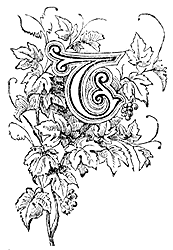 |

HE writer cannot pass over Porchester Castle, although no romantic incident is recorded of it; for it was a childhood's haunt, and seemed then a visible representation of the castles of romance and of fairy-land. How many stories of knights and ladies, of giant and enchantress, we have woven in those days of the grey keep and its surrounding walls! Then, too, it was difficult of approach by water - at least, if you were not well up in the tides, and were not very attentive to the posts that marked the channels up Porchester Lake, as that part of Portsmouth Harbour is called; for at low tide the passage has on each side formidable mud-banks, and if, while they still were covered (but not deeply enough for a boat to sail or row over them), the boat stuck on them, one had to wait a weary time aground till the next high tide released her.
Yet the sail was a very pleasant one up the harbour from Portsmouth, passing the dockyard, avoiding the Excellent's gun practice, and gliding by the superannuated dear old men-of-war that could "dare the seas no more." Then in Porchester Lake we had, on the left hand, the magazines for gunpowder and the little village of Hardway, while right ahead rose the grey keep, backed by the great hill called Portsdown, with its glittering white chalk-pits and green downs.
At last we land safely on the beach, where grows the beloved blue borage flowers and many another little sea darling, and approach the castle. It is a very ancient fortress. Its origin is unknown, but Porchester must have had a fortress on its site from the earliest times. Stow says it was founded by a son of Beline in 375, and that its British name was Caer Peris. By the Romans the harbour and castle were deservedly called Portus Magnus; and it has been affirmed by some historians that Vespasian landed here on his first visit to Britain. It must have been in his possession when he conquered the isle of Wight. Titus was with him, and once when Vespasian was surrounded by the barbarians, who fought so gallantly for their native land, and was with his legion in considerable danger from them, his admirable son, with great boldness, broke through the ring they had formed, rescued him, and put the natives to flight, slaying many of them. In later times this castle was held by the great officer who defended the Saxon shore from pirates.
The outer walls, with their semi-circular towers, from one of which we had as a child a near escape of falling, were undoubtedly built by the Romans; but Saxons, Normans and English have added to the castle, and the different modes of building can all he easily traced here. The fortress is of quadrangular form, and includes an area of nearly five acres. The walls vary from eight to ten feet of thickness, and in many parts a rampart and parapet remain. There are eighteen towers connected with the walls still standing - round, square, and semi-circular ones. The keep, of noble dimensions, is in the northwestern angle of the fortress. Here originally stood the ancient round tower of the Romans; adjoining was the sacellum for the Roman idolatrous ensigns. The round tower was removed, and a Saxon keep built in its place for the residence of the lord and his family ; and where the Roman eagles and victories once stood was built a Christian church. The keep is, of course, therefore, early Saxon; it is lofty, and has two vaults or dungeons at the bottom, with three storeys above, each containing a double room of good size. The walls are nearly eight feet thick. The rooms in the two first storeys are lighted from narrow loopholes; on the third storey (where probably were the State apartments) there are small plain windows on two sides.
The most curious part of the inner court, which is Norman, is its entrance - a portal with an obtuse pointed arch, with a strong gate; then a portcullis, and beyond that another great gate; eighteen feet further on, a second portcullis, and beyond that a third great gate. The entrance passage is vaulted and perforated, and furnished with machicolations for pouring molten lead, hot water, etc., on assailants entering it To these machicolations and the battlements above there was a passage from the top of the walls surrounding the inner court. These entrances, so strong and well defended, are mute witnesses of the terrible dangers of the period to which they belong, and from which they were intended to guard the indwellers,
The castle and town - it is now a village - of Porchester, with the adjoining forest, then valued at £16 13s., were settled on Margaret of Anjou as part of her dowery.
During the war with Napoleon, French prisoners were incarcerated in Porchester Castle; there were at one time nearly 9,000 captives of our fleets within its walls. These poor creatures made and sold many trifles to the neighbours, and we have seen very pretty straw-work and silk shoes made by them, which are still to be found in the chests and attics of the country houses round the place.
There used to be a bust of Julius Caesar kept in the castle; it was coloured, and the people had a superstition that when rain was approaching the colour of the cheeks faded! It is very doubtful whether it was ever intended for a bust of Julius Caesar, as it bore not the slightest resemblance to the heads on his coins.
|
 |